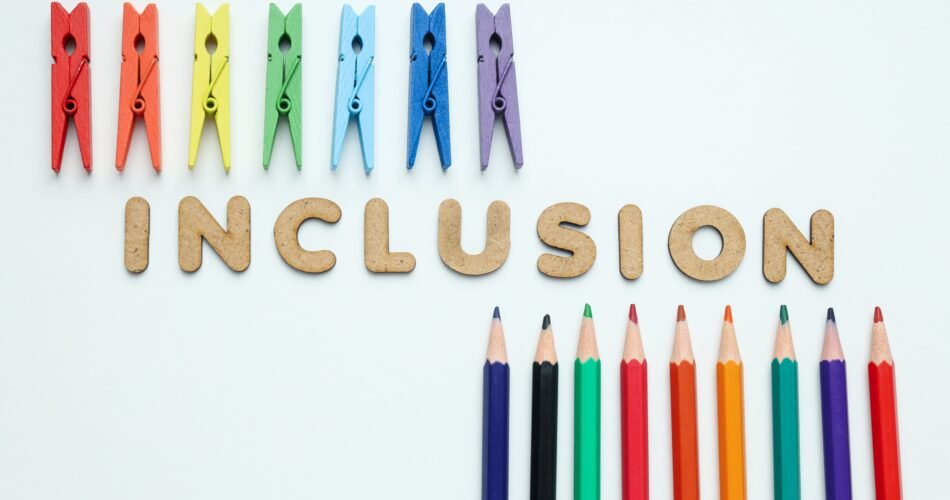Leadership is changing. The old playbook—where everyone was expected to fit the same mold, communicate the same way, and work on the same schedule—just doesn’t cut it anymore. We’re moving toward something better: workplaces that actually work with how people’s brains function, not against them.
This is where neurodiversity comes in. It’s the understanding that people think, learn, and process the world differently—and that’s not a problem to fix. It’s just how humans are.
Neurodiversity training helps leaders see past the “one right way” of doing things. It teaches them to recognize and support people with ADHD, autism, dyslexia, dyspraxia, and other neurological differences—not because they have to, but because they finally get it: different minds make teams stronger. And here’s the thing—when leaders shift how they think about this stuff, it doesn’t just help neurodivergent employees. It makes the whole workplace better.
Starting With the Basics
Most leaders don’t start out knowing much about neurodiversity. Sure, they’ve heard about diversity and inclusion around things like race, gender, or age. But cognitive diversity? That one tends to fly under the radar.
Neurodiversity training fills in that gap. It gives leaders a way to spot, appreciate, and actually harness different ways of thinking.
Through training, managers learn that when someone processes information differently, it often means they bring something special to the table—maybe incredible focus, fresh perspectives, or a knack for solving problems others can’t crack. What used to look like “quirky behavior” becomes a chance to rethink how work gets done. Instead of forcing everyone into the same box, smart leaders start adjusting the environment to fit different strengths.
It’s a shift from “let me accommodate you” to “let me set things up so you can do your best work.” Big difference.
Catching Your Own Blind Spots
One of the most eye-opening parts of neurodiversity training? Realizing how many assumptions we make without even knowing it.
These biases pop up everywhere—in job interviews, performance reviews, team meetings. A manager might think someone’s flat tone means they don’t care, or that pausing before answering means they’re unprepared. Neither is usually true.
Training encourages leaders to hit pause before jumping to conclusions. To look for patterns instead. Some people share ideas better in writing. Others need a clear agenda before meetings so they’re not overwhelmed by noise or unexpected topics.
When leaders learn to flex their communication style, misunderstandings drop and engagement goes up. People who feel understood for how they actually work? They show up differently. They contribute more.
Creating Space to Be Real
Real inclusion happens when people feel safe being themselves. Neurodiversity training gives leaders concrete ways to build that kind of environment—where employees can say “I need this” or “Can we try that?” without worrying they’ll be judged or labeled.
Leaders find out that creating safety isn’t complicated. It often starts with just asking better questions: “How do you work best?” or “What helps you stay on track?”
Those simple shifts send a message: your differences aren’t just tolerated—they’re valued.
As leaders get better at this, the whole team culture changes. Meetings get more productive because people actually understand each other. Workflows smooth out because tasks match people’s natural strengths. And trust builds—which is what makes teams actually work.
The Domino Effect on Results
This isn’t just about being nice. It shows up in the work.
When managers embrace neurodiversity, teams get sharper and more creative. People with different thinking styles challenge the usual way of doing things, come up with solutions nobody saw coming, and notice patterns others miss completely.
Neurodivergent professionals often excel at things like spotting patterns, digging into data, or thinking outside the box. When leaders know how to tap into those strengths intentionally, collaboration clicks and things move faster.
The research backs this up: teams with different ways of thinking consistently outperform teams where everyone thinks alike. But that only happens when leadership is flexible enough to make room for those differences. Neurodiversity training gives leaders both the mindset and the practical know-how to pull it off.
Beyond Checking Boxes
Too often, inclusion becomes about checking compliance boxes. A thing to do because you’re supposed to, not because you actually believe in it.
Neurodiversity training flips that script. It shows leaders that inclusion isn’t just policy—it’s smart leadership rooted in actually understanding people.
Leaders who embrace this start seeing their job differently. They’re not just managing tasks anymore—they’re unlocking potential. Instead of pushing everyone toward sameness, they encourage people to bring their whole selves. The relationship shifts from boss-and-employee to something closer to partners.
And that shift doesn’t stop with neurodivergent employees. When leaders model empathy, everyone notices. Teams become more understanding. Collaboration deepens. The whole culture becomes more human.
Where Leadership Is Headed
As work evolves, the leaders who succeed will be the ones with emotional intelligence, adaptability, and a genuine commitment to inclusion. Neurodiversity training builds all three. It teaches leaders to see differences not as inconveniences, but as advantages.
Companies investing in neuro-inclusive leadership aren’t just doing the right thing—they’re getting ready for what’s next. The leaders who’ll thrive going forward are the ones who can truly listen, think flexibly, and lead with their humanity showing.
Making It Real
At Elevate Up, we help organizations turn awareness into action. Our neurodiversity training doesn’t just teach concepts—it changes how leaders think and operate. Through hands-on workshops and research-backed strategies, we help managers build workplaces rooted in trust, flexibility, and real inclusion. Because when leaders evolve, everyone around them does too.
